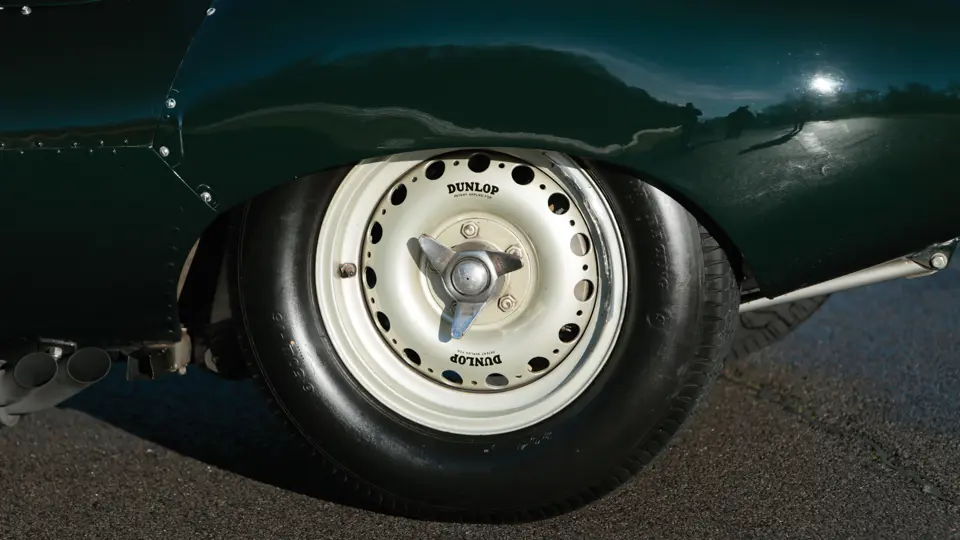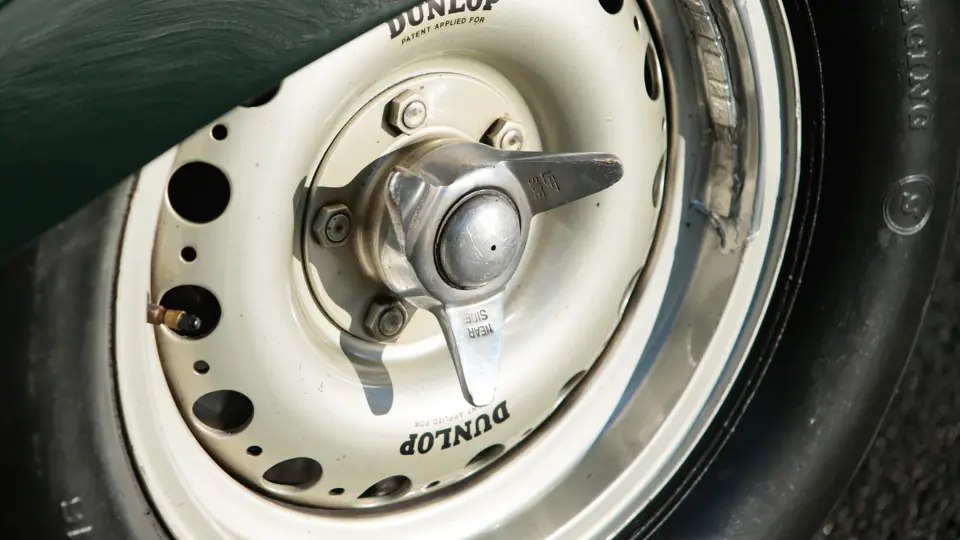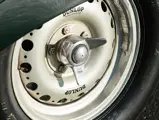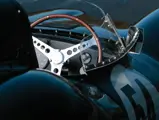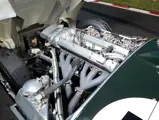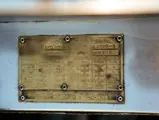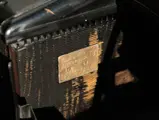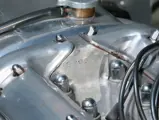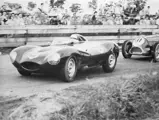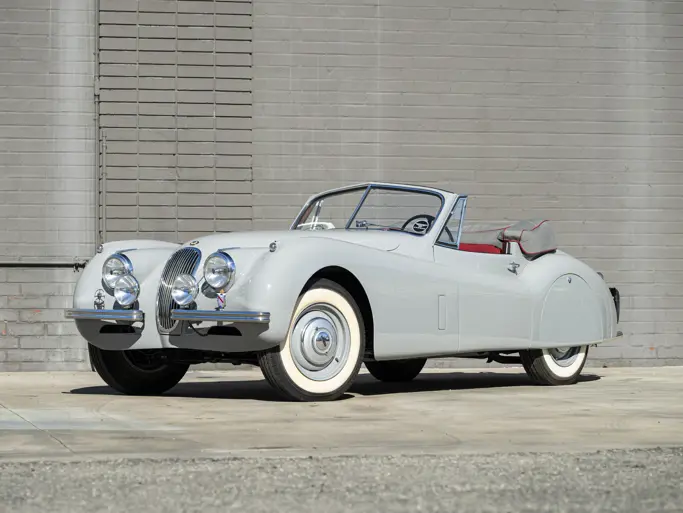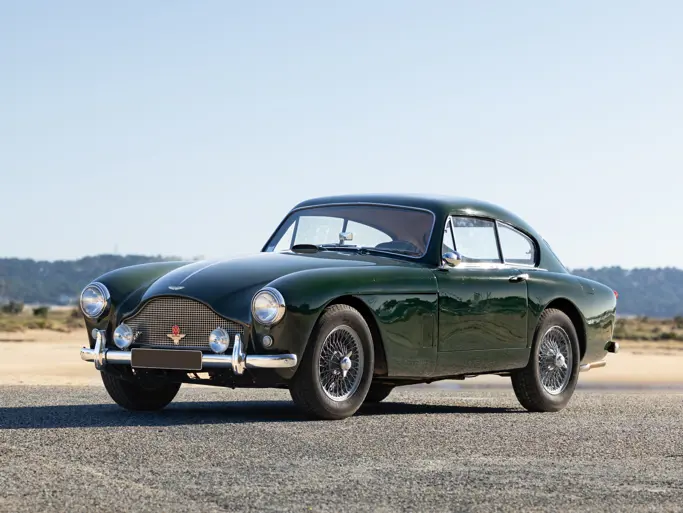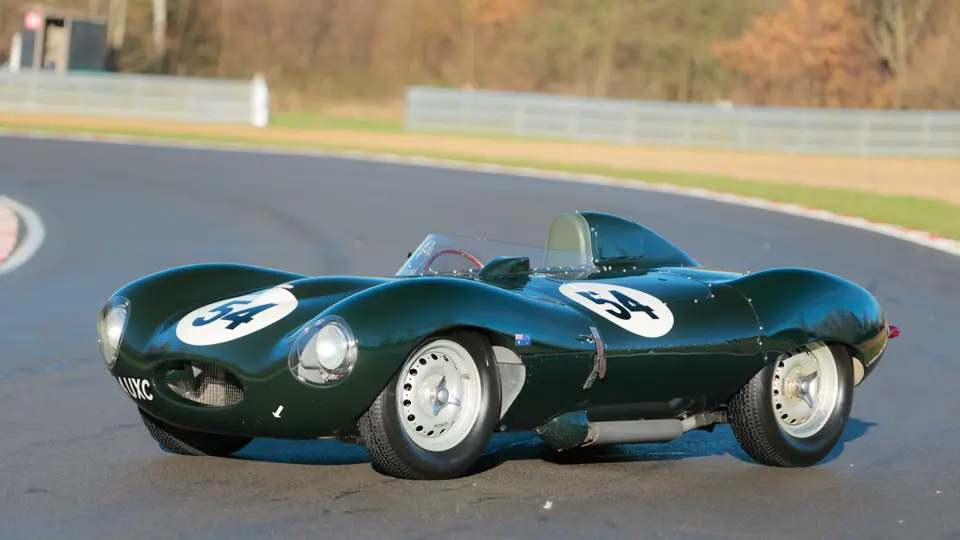
1955 Jaguar D-Type
{{lr.item.text}}
€3,696,000 EUR | Sold
{{bidding.lot.reserveStatusFormatted}}
- Highly original example with period race history
- The seventh customer D-Type produced
- Delivered new and raced by four-time Australian Drivers’ Champion Bib Stillwell
- Owned by 1970 Le Mans winner Richard Attwood
- Decades of care by marque expert Chris Keith-Lucas
- Jaguar’s most iconic sports racing model
- Exemplaire extrêmement original, avec palmarès d'époque
- Septième Type D "client" produite
- Livrée neuve au Champion australien Bib Stillwell
- A appartenu à Richard Attwood, vainqueur des 24 Heures du Mans 1970
- Entretenue pendant des années par le spécialiste de la marque Chris Keith-Lucas
- La plus emblématique des Jaguar de competition
Approx. 300 bhp, 3,781 cc dual overhead-camshaft inline six-cylinder engine with three Weber 36 DCO3 carburettors, four-speed manual gearbox, independent front suspension, live rear axle with trailing links and transverse torsion bar, four-wheel disc brakes, and steel-tube sub-frames bolted to a monocoque body. Wheelbase: 2,300 mm
Moteur six-cylindres en ligne, 3 781 cm3, 300 ch, deux ACT, trois carburateurs Weber 36 DCO3, boîte manuelle quatre rapports, roues avant indépendantes, avec bras tirés et barre de torsion transversale, freins à disques sur les quatre roues, berceaux tubulaires boulonnés sur structure monocoque. Empattement: 2 300 mm.
The mighty D-Type succeeded Jaguar’s C-Type with a smashing debut at the 1954 24 Hours of Le Mans, where it roared to a 2nd overall finish. Although the model was powered by a further developed version of the C-Type’s long-running 3.4-litre XK competition engine, the D-Type varied from its predecessor with completely different construction, which featured two chassis sub-frames bolted to a monocoque. The coachwork was a beautiful study of aerodynamics that was penned by Malcolm Sayer, and it had the unmistakable suggestions of the forthcoming E-Type, including the introduction of the iconic oval-mouth grille.
Just 54 customer cars and 6 factory team cars were built over a three-year period. On the endurance circuits of the period, few cars could match the D-Type, with multiple dominating performances at Nürburgring, Reims, Sebring, and, most importantly, three consecutive victories at Le Mans between 1955 and 1957. The D-Type is an aesthetic masterpiece that sealed Jaguar’s position in post-war racing lore, and it will forever be considered one of the era’s most important and beguiling sports cars.
Chassis number XKD 520 is the seventh customer D-Type built, and it was ordered new in June 1955, through Australian importer Jack Bryson, on behalf of its first owner, Bib Stillwell, a local sports car racer and future four-time consecutive winner of the open-wheel Australian Drivers’ Championship. After arriving in Melbourne in January 1956, this car was used extensively by Stillwell, setting numerous sports car records at local circuits, including the Bathurst 500 and the Rob Roy Hill Climb, and it took an outright victory at the South Australia Trophy in Port Wakefield. After briefly being prepared for a run at a landspeed record, XKD 520 returned to sports car class competition, winning the Bathurst Road Racing Championship in 1956.
The slate of triumphs continued with the D-Type’s performance at the Moomba Tourist Trophy at Albert Park in Melbourne, where the car roared to a 2nd place finish in March 1956, as well as the Australian Tourist Trophy at the same location in November, where the car finished 5th. Mr Stillwell’s career in XKD 520 essentially concluded the following spring on 24 March 1957, when he took 3rd place at Albert Park.
A short time later, this beautiful D-Type was purchased by AMPOL (the Australian Motorists Petrol Company), on behalf of Jack Davey, who was a wartime radio personality of great regional renown. It was entrusted to Bill Murray, of Surfer’s Paradise, and was prepared for the AMPOL-sponsored speed trials, but unfortunately, an accident during transport prevented the car’s participation in the race. The D-Type was then sold to enthusiast Frank Gardner, who rebuilt the still-capable race car and undertook a competition campaign of his own, taking 2nd place at Bathurst in 1958, 1st place at the Mount Druitt Hill Climb, and 3rd place at both of the Orange Racing Car Scratch Races (where he notably only lost to grand prix cars).
In November 1958, XKD 520 was sold to David Finch, who soon fitted the car with a factory-supplied 3.8-litre engine, which was a more powerful motor that was equipped on later D-Types and sometimes sold as a replacement engine. The new engine prolonged the car’s competitive ability, allowing it to gamely participate in the Longford event of 1960 and to take 1st overall at the Queensland Tourist Trophy of 1961. Around this time, a minor incident necessitated work to the front end, and Mr Finch took the opportunity to replace the nose with a long-nose bonnet crafted by Sydney body-man Ian Standfield, in the style of the Le Mans-winning long-nose D-Types.
In May 1962, this outstanding Jaguar was purchased by Ash Marshall and treated to a thorough freshening, which included chroming multiple components. Over the next few years, the car passed through ownership by Peter Bradley and Richard Parkinson, before being acquired in 1967 by racing great Richard Attwood, the future Le Mans winner. Attwood would keep the car for some 10 years, before selling it to Sir Angus Spencer Nairn.
In 1977, Chris Keith-Lucas picked the car up from Mr Attwood’s residence on behalf of the new owner. In a letter, of which a copy is included on file, Keith-Lucas recalls the car fondly: “It was generally quite well-presented, but [it] needed a straight forward recomissioning before being sent to the new owner”.
Few businesses could be better prepared to treat XKD 520 to a light freshening. Whilst under Lynx’s care, the car was tended by managing director Chris Keith-Lucas—a recognised marque expert who would later go on to found the well-known and highly regarded CKL Developments—commencing nearly 30 years of attention by Mr Keith-Lucas.
Angus used his D-Type lightly, taking part on several track days and competing in the Mille Miglia retrospective, although the car was never seriously raced during that time. In 2004, XKD 520 was acquired by Clive Jarman. It was sent back for maintenance work by Keith-Lucas, who, by this time, had founded his own company, CKL Developments. Jarman decided to correct one feature of XKD 520 that had remained unsatisfactory to him for many years. As mentioned, the original short-nose bonnet had been replaced in 1961 with a long-nose version. As it was not entirely correct, CKL managed to source an original short-nose bonnet that had been discarded decades ago during the restoration of an XKSS. It should be noted that the Australian crafted long-nose bonnet is supplied with the car, as it remains a part of its notable history. Now with a correct-type bonnet, Mr Keith-Lucas states: “In my opinion, [this] car remains one of the best production D-Types in existence today. To the very best of my knowledge, [it] has retained its principle components since the end of the 1950s. It is one of my favourite D-Types”.
XKD 520 has been recently serviced, once again, by CKL, and it is accompanied by extensive documentation, including a FIA Historical Technical Passport. It is one of the earliest and most original examples of a customer-specification D-Type, and it is eligible for the most desirable events in the world. The Jaguar D-Type will always have its place in history as one of the all-time greats. At the pinnacle of the Jaguar spectrum, the D-Type is delicate yet aggressive, mixing style with performance and proving itself in race results. XKD 520 is one of very few cars that boast a great provenance, making it a great addition to any stable of collector cars.
La spectaculaire Type D a succédé avec panache à la Type C en signant dès 1954 la deuxième place au classement général des 24 Heures du Mans. Même si elle était équipé d'un moteur dérivé du 3,4 litres compétition de la Type C, la Type D bénéficiait d'une architecture complètement différente, comportant une structure monocoque sur laquelle venaient se greffer deux berceaux tubulaires. La carrosserie résultait d'une splendide étude aérodynamique de Malcolm Sayer, et offrait des traits de style caractéristiques que l'on allait retrouver plus tard sur la Type E, dont la fameuse bouche ovale de calandre.
Sur une période de trois ans, 54 exemplaires Clients et six versions Usine ont été produits. Dans les épreuves d'endurance, rares étaient les voitures capables à l'époque d'égaler la Type D, qui s'est distinguée au Nürburgring, à Reims, à Sebring, sans oublier évidemment ses trois victoires consécutives aux 24 Heures du Mans, de 1955 à 1957. La Type D est un chef-d'œuvre esthétique qui a établi la réputation de Jaguar dans le monde de la course automobile d'après-guerre ; elle sera toujours considérée comme une des machines de course les plus importantes et les plus brillantes de son époque.
La voiture portant le n° de châssis XKD 520 est le septième exemplaire Client produit. Elle a été commandée neuve par l'intermédiaire de l'importateur australien Jack Bryson pour son premier propriétaire, Bib Stillwell, pilote privé local et futur quadruple vainqueur de l'Australian Drivers' Championship. Après son arrivée à Melbourne en janvier 1956, la voiture a été abondamment utilisée par Stillwell, établissant de très nombreux records dans les épreuves locales comme le Bathurst 500 et la course de côte Rob Roy, tout en décrochant une victoire au classement général du South Australia Trophy, à Port Wakefield. Après avoir été brièvement préparée pour un record de vitesse sur terre, XKD 520 revenait à la compétition sur circuit, remportant le Bathurst Road Racing Championship en 1956.
La série de succès se poursuivait avec la deuxième place de la Type D au Moomba Tourist Trophy, à Albert Park (Melbourne), en mars 1956, ainsi qu'avec une cinquième position à l'Australian Tourist Trophy, sur le même circuit, au mois de novembre. La carrière de M. Stillwell avec XKD 520 arrivait à son terme au printemps suivant, le 24 mars 1957, lorsqu'il s'adjugeait la troisième place à Albert Park.
Peu de temps après, la voiture était achetée par AMPOL (Australian Motorists Petrol Company) pour le compte de Jack Davey, une personnalité des ondes radiophoniques de l'époque de la guerre, très célèbre dans la région. Elle était confiée à Bill Murray, de Surfer’s Paradise, et préparée pour les épreuves de vitesse sponsorisées par AMPOL. Malheureusement, un accident pendant le transport empêchait la voiture de prendre part à la compétition. La Type D était alors vendue au pilote Frank Gardner, qui remettait cette voiture encore très compétitive en état et se lançait dans une campagne de compétitions, signant la deuxième place à Bathurst en 1958, la victoire à la course de côte de Mount Druitt et la troisième place aux deux Orange Racing Car Scratch Races (où il ne s'inclinait que derrière des monoplaces de Grand Prix).
Au mois de novembre 1958, XKD 520 était vendue à David Finch, qui l'équipait sans tarder d'un moteur 3,8 litres fourni par l'usine. Ce moteur plus puissant équipait les Type D plus récentes et il était parfois vendu comme moteur de remplacement. Il permettait à cette Type D de rester dans la course, de participer au meeting de Longford en 1960 et de s'emparer de la victoire au Queensland Tourist Trophy de 1961. A peu près à cette époque, un incident mineur impliquait des travaux sur la partie avant, ce dont profitait M. Finch pour remplacer le capot par une version "nez long", réalisée par Ian Standfield, carrossier de Sydney, dans le style des Type D victorieuses aux 24 Heures du Mans.
En mai 1962, cette splendide Jaguar était achetée par Ash Marshall qui lui faisait bénéficier d'une remise en état incluant le chromage de nombreux composants. Au cours des années suivantes, elle passait entre les mains de Peter Bradley et Richard Parkinson, avant que Richard Attwood, futur vainqueur des 24 Heures du Mans, n'en fasse l'acquisition en 1967. Après l'avoir gardée une dizaine d'années, il la cédait à Sir Angus Spencer Nairn.
En 1977, Chris Keith-Lucas prenait livraison de la voiture pour le compte du nouveau propriétaire en allant la chercher à la résidence de Richard Attwood. Dans une lettre dont une copie fait partie du dossier, Keith-Lucas s'en souvient avec plaisir : "Dans l'ensemble, elle se présentait plutôt bien mais avait besoin d'une révision complète avant d'être remise au nouveau propriétaire."
Rares étaient les ateliers aussi bien préparés pour s'occuper correctement de XKD 520. Chez Lynx, elle était sous la responsabilité du directeur général, Chris Keith-Lucas—un spécialiste reconnu de la marque, qui allait plus tard créer CKL Developments, entreprise d'excellente réputation. C'était le début de 30 ans d'un suivi attentif par M. Keith-Lucas.
Angus utilisait alors sa Type D de temps en temps, prenant part à des séances sur circuit et participant à la rétrospective des Mille Miglia, mais sans l'engager pour de véritables compétitions. En 2004, XKD 520 passait entre les mains de Clive Jarman. Il la renvoyait chez Keith-Lucas qui, entretemps, avait fondé sa propre entreprise, CKL Developments. Jarman décidait alors de corriger un aspect de la voiture qui ne le satisfaisait pas. Comme nous l'avons mentionné plus haut, l'avant avait été remplacé en 1961 par une version "nez long". Comme elle n'était pas parfaitement correcte, CKL réussissait à trouver un capot "nez court" original, mis de côté plusieurs années auparavant lors de la restauration d'une XKSS. Il faut toutefois préciser que le capot "nez long" australien sera livré avec la voiture, car il fait partie intégrante de son histoire. Maintenant que cette Type D est équipée d'un capot correct, M. Keith-Lucas précise : « A mon avis, cette voiture représente une des meilleures Type D client encore en existence. A ma connaissance, elle a gardé ses principaux composants depuis la fin des années 1950. C'est une des mes Type D préférées ».
XKD 520 a bénéficié récemment d'une opération d'entretien par CKL. Elle est accompagnée d'une documentation fournie, dont un Passeport Technique Historique FIA. Il s'agit d'un des exemplaires les plus anciens et les plus originaux de Type D aux spécifications client, et elle est éligible à la plupart des plus beaux événements historiques du monde. La Jaguar Type D aura toujours sa place dans l'histoire des plus belles machines de course. Au panthéon des productions Jaguar, la Type D est à la fois élégante et virile, mêlant style et performances, et elle s'est forgée de brillants résultats en compétition. XKD 520 est une des très rares voitures affichant un belle provenance, ce qui en fait une pièce de grande qualité pour toute écurie de machines historiques.
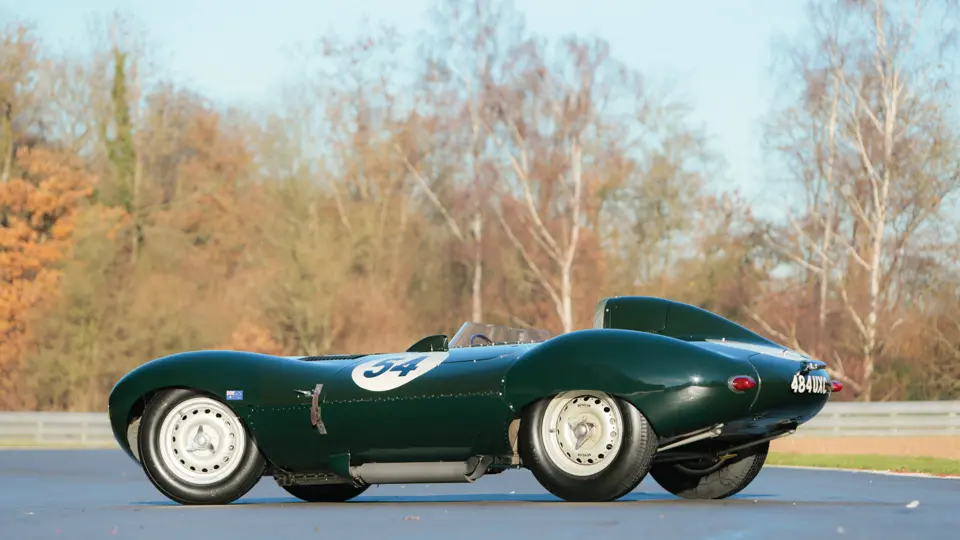
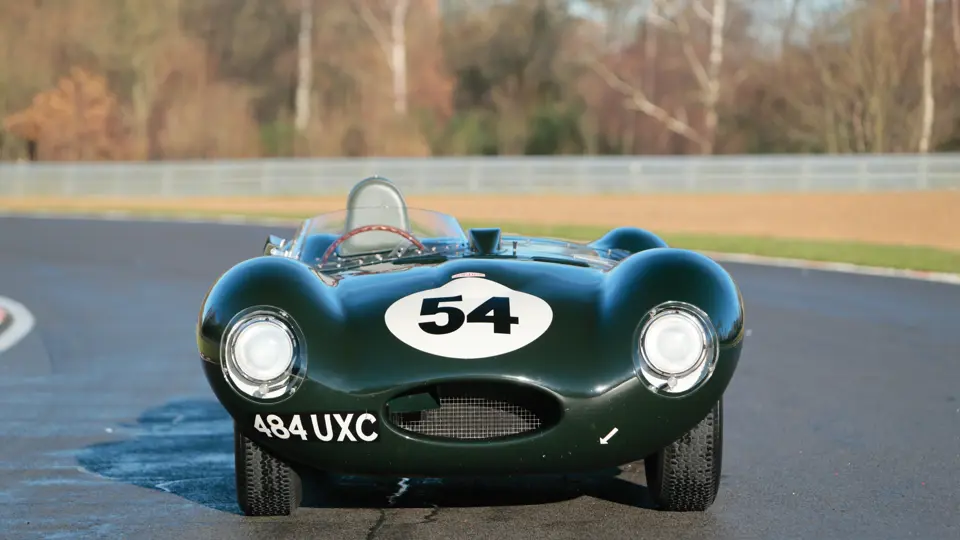


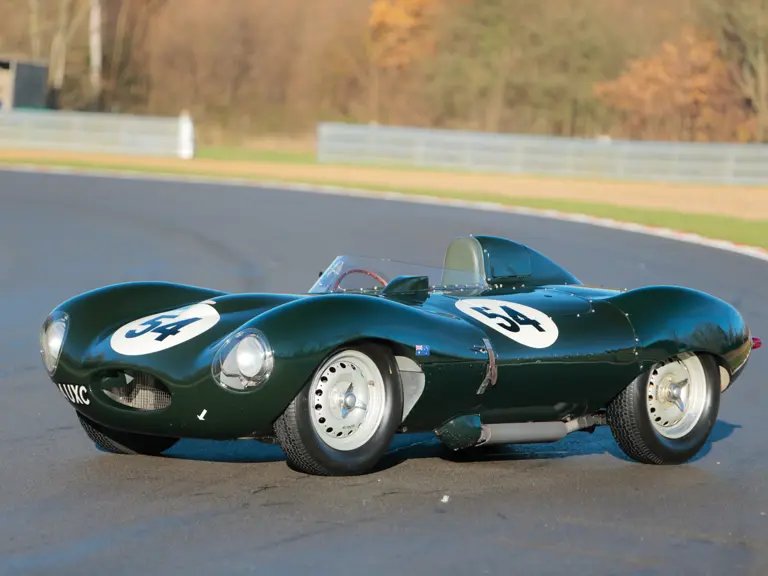
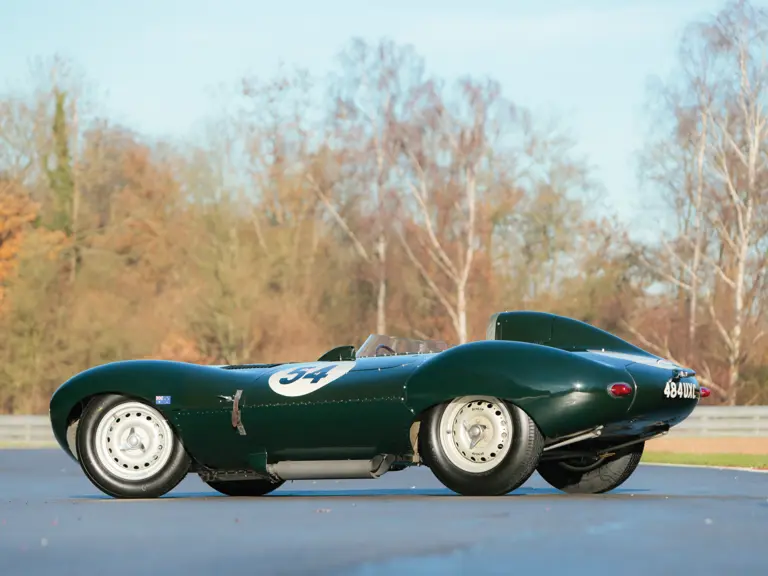
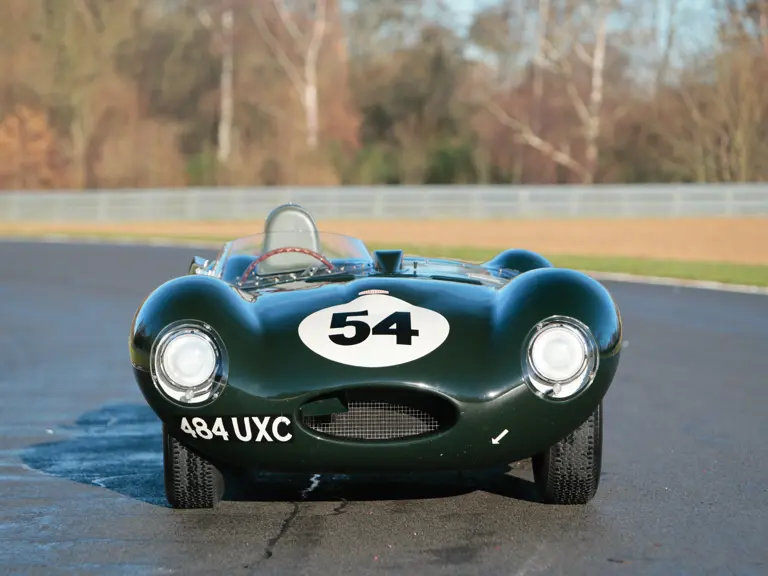
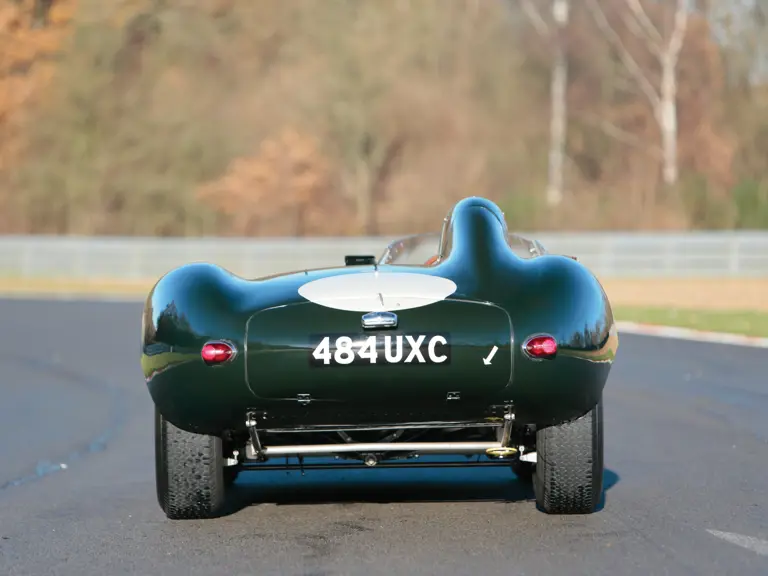
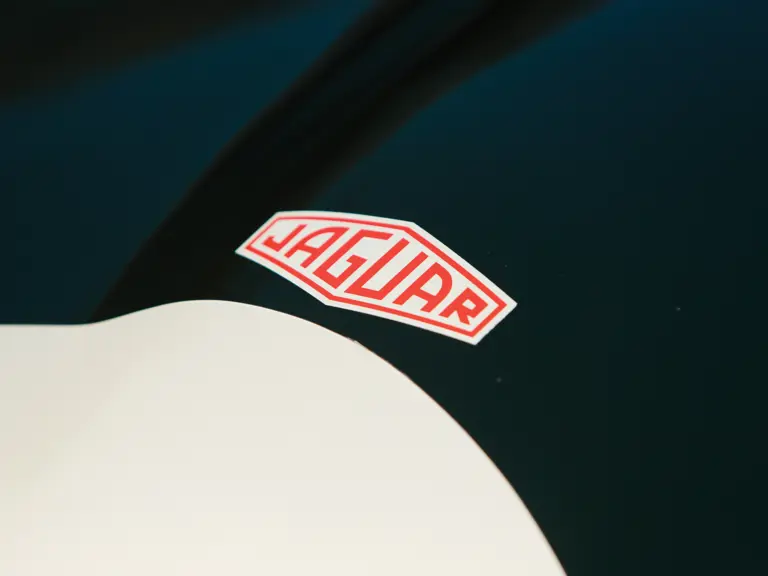
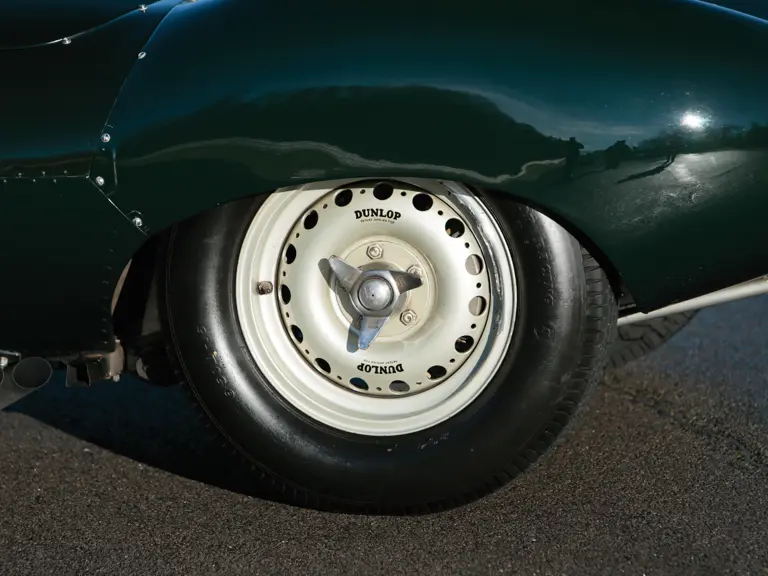
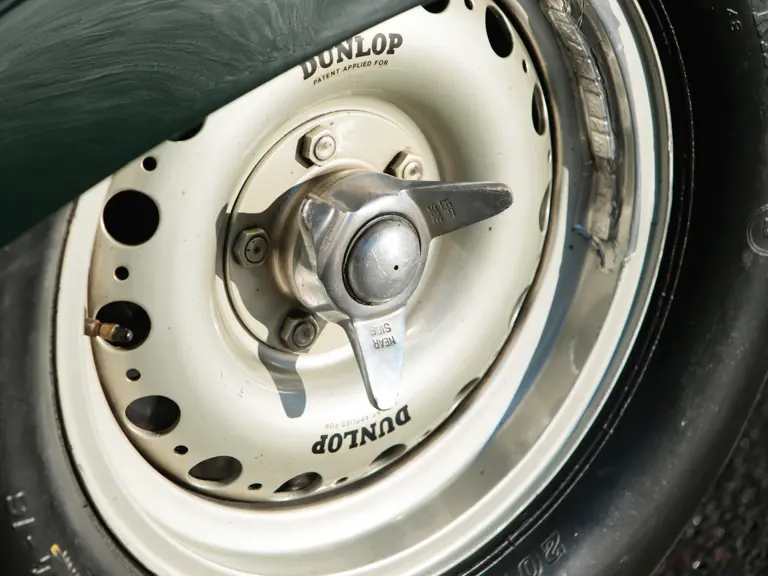



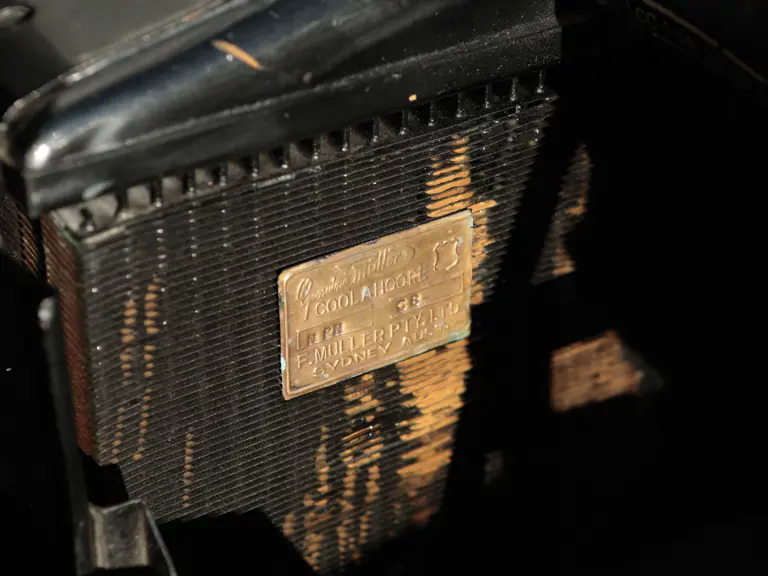



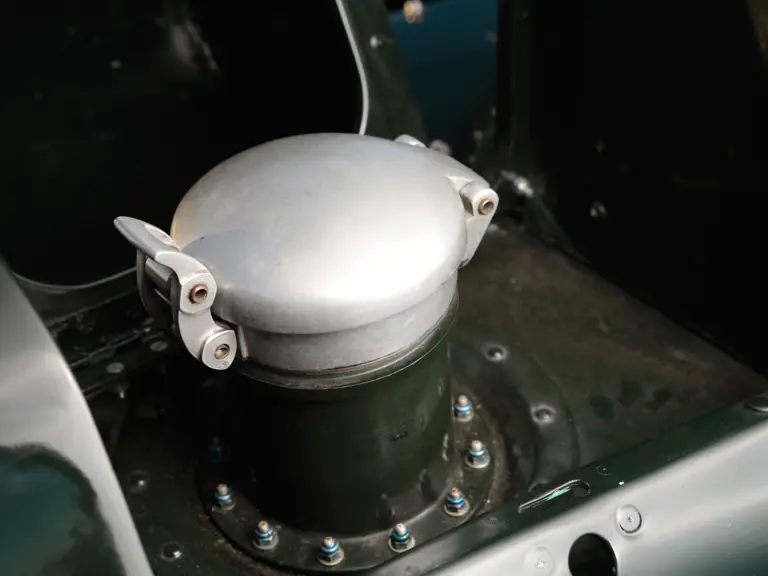
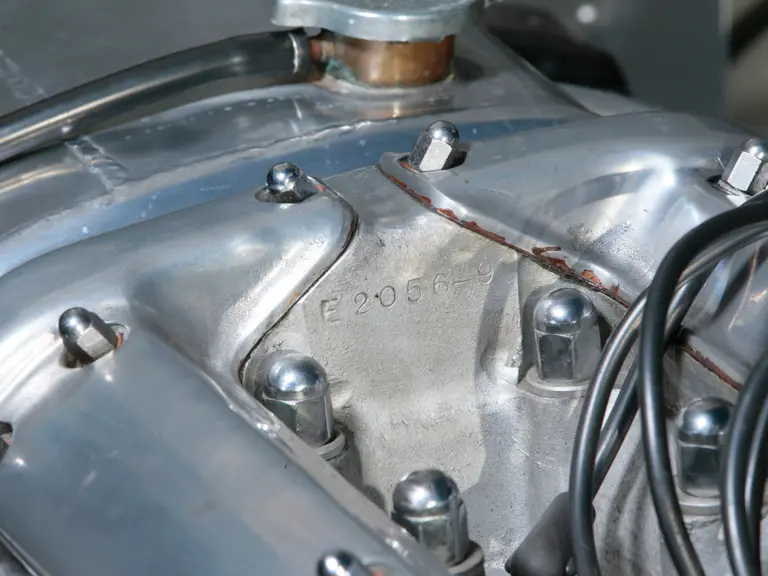

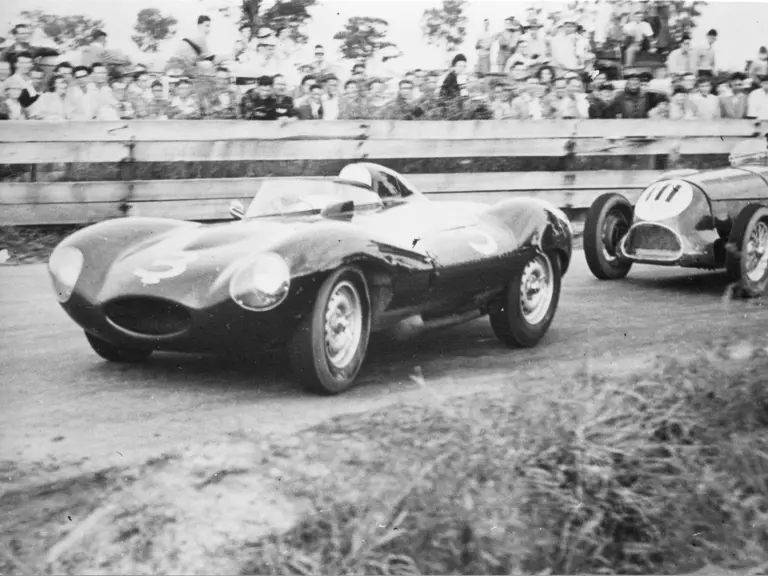
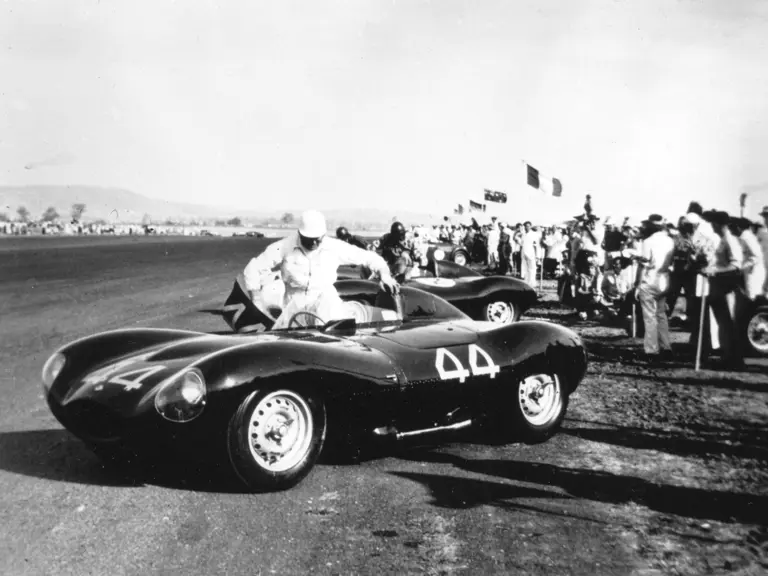
 | Paris, France
| Paris, France

